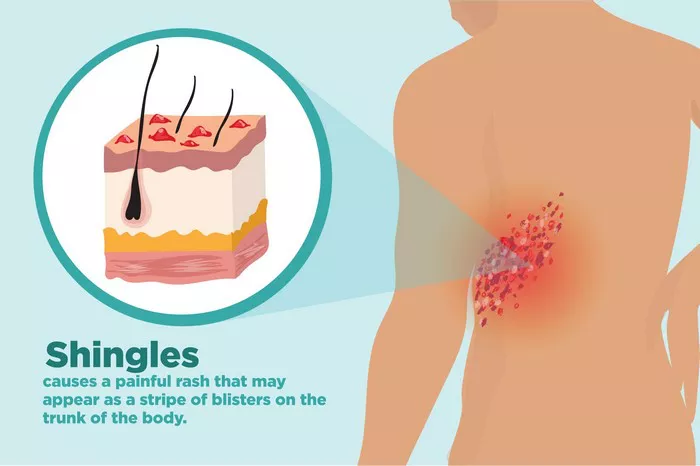Ringworm, despite its name, is not a worm. It is a fungal infection that affects the skin, hair, or nails. The medical term for ringworm is tinea, followed by a body part’s name, such as tinea corporis for the body, tinea capitis for the scalp, and tinea pedis for athlete’s foot. This article will explore whether ringworm can spread while being treated and provide detailed information on its causes, symptoms, treatment, and prevention.
Understanding Ringworm
What Causes Ringworm?
Ringworm is caused by several types of fungi, primarily dermatophytes. These fungi thrive in warm, moist environments. Common sources of infection include:
Direct Contact: Touching an infected person or animal can transfer the fungus.
Contaminated Surfaces: Walking barefoot on infected floors, using shared towels, or touching surfaces like gym equipment can spread the infection.
Soil: Fungi can live in soil and may infect individuals who come into contact with it.
How Does Ringworm Look?
Ringworm typically presents as a red, circular rash with clearer skin in the center. The edges of the rash may be raised and scaly. It can appear on various parts of the body, including the scalp, face, feet, and nails.
The Life Cycle of Ringworm
Incubation Period
Once exposed to the fungus, symptoms may take 4 to 14 days to appear. During this time, the fungi multiply, and the infection spreads.
Spread of Infection
Ringworm is contagious. The fungi can be passed from person to person, animal to person, or from contaminated objects.
Treatment of Ringworm
Topical Treatments
Most cases of ringworm can be treated with over-the-counter antifungal creams, lotions, or powders. Common ingredients include:
- Clotrimazole
- Miconazole
- Terbinafine
These medications are applied directly to the infected area. It’s essential to follow the instructions on the package and continue treatment for the recommended duration, even if symptoms improve.
Oral Medications
For more severe cases, particularly those affecting the scalp or nails, doctors may prescribe oral antifungal medications. These include:
- Griseofulvin
- Terbinafine
- Itraconazole
Oral treatments typically require a longer course of therapy, sometimes several weeks or months.
Can Ringworm Spread During Treatment?
The Contagious Period
Ringworm can spread even while a person is being treated. This is because the fungi can still be present on the skin, even if symptoms have started to improve. Here’s how it works:
Fungi in the Skin: Treatment reduces the number of fungi but may not eliminate them immediately.
Contact with Others: If the infected area is not covered properly, it can still spread through skin-to-skin contact.
Shared Items: Items such as towels, clothing, or grooming tools can still harbor the fungus.
Importance of Continued Treatment
Even when a person feels better, it’s crucial to continue the treatment as prescribed. Stopping early can allow the fungus to survive and potentially spread to others.
Precautions During Treatment
Cover the Infected Area
Keeping the infected area covered with clean, dry bandages can help prevent the spread of fungi. This is especially important for ringworm on the body and scalp.
Avoid Sharing Personal Items
Do not share personal items like towels, combs, or clothing until the infection is fully resolved. This is a key step in preventing transmission.
Maintain Good Hygiene
Good hygiene practices can help minimize the risk of spreading ringworm:
- Wash your hands frequently, especially after touching the infected area.
- Bathe regularly and use antifungal soap if recommended by a healthcare provider.
- Change and wash clothing and bedding frequently.
Keep the Environment Clean
Cleaning and disinfecting surfaces in shared areas, such as bathrooms and gyms, can help reduce the spread of ringworm. Use antifungal sprays or wipes on commonly touched surfaces.
The Role of Immune System
Immune Response
A strong immune system can help combat fungal infections. Factors that support a healthy immune system include:
Balanced Diet: Eating a variety of fruits, vegetables, whole grains, and proteins can bolster immune function.
Regular Exercise: Physical activity helps improve overall health and immunity.
Adequate Sleep: Getting enough rest allows the body to recover and fight infections more effectively.
Individuals at Higher Risk
Some people may be more susceptible to ringworm and may need to take extra precautions:
Individuals with Compromised Immune Systems: Conditions such as diabetes, HIV, or those undergoing chemotherapy are at higher risk.
Children and the Elderly: These age groups may have weaker immune responses.
Athletes: Those who sweat a lot or use shared facilities are more likely to contract ringworm.
Signs That Ringworm Is Improving
While being treated, it’s important to monitor the infection. Signs of improvement include:
- Reduced redness and swelling
- Decrease in itchiness
- The rash beginning to fade or shrink
If symptoms worsen or do not improve after a few weeks, consult a healthcare provider.
When to Seek Medical Advice
If you suspect ringworm or are experiencing severe symptoms, it’s essential to seek medical advice. Signs that require immediate attention include:
Severe Pain or Swelling: If the area becomes extremely painful or swollen.
Spreading Rash: If the rash is spreading despite treatment.
Signs of Infection: Increased redness, warmth, pus, or fever may indicate a secondary bacterial infection.
Conclusion
Ringworm is a common fungal infection that can spread even during treatment. Understanding how it spreads and taking appropriate precautions is vital to prevent transmission to others. Adhering to treatment guidelines, maintaining good hygiene, and protecting infected areas are all essential steps in managing ringworm effectively.
By following these practices, you can help ensure a quicker recovery while minimizing the risk of spreading the infection to others. If you have any concerns or experience worsening symptoms, it’s always best to consult a healthcare professional.
Related topics:


























